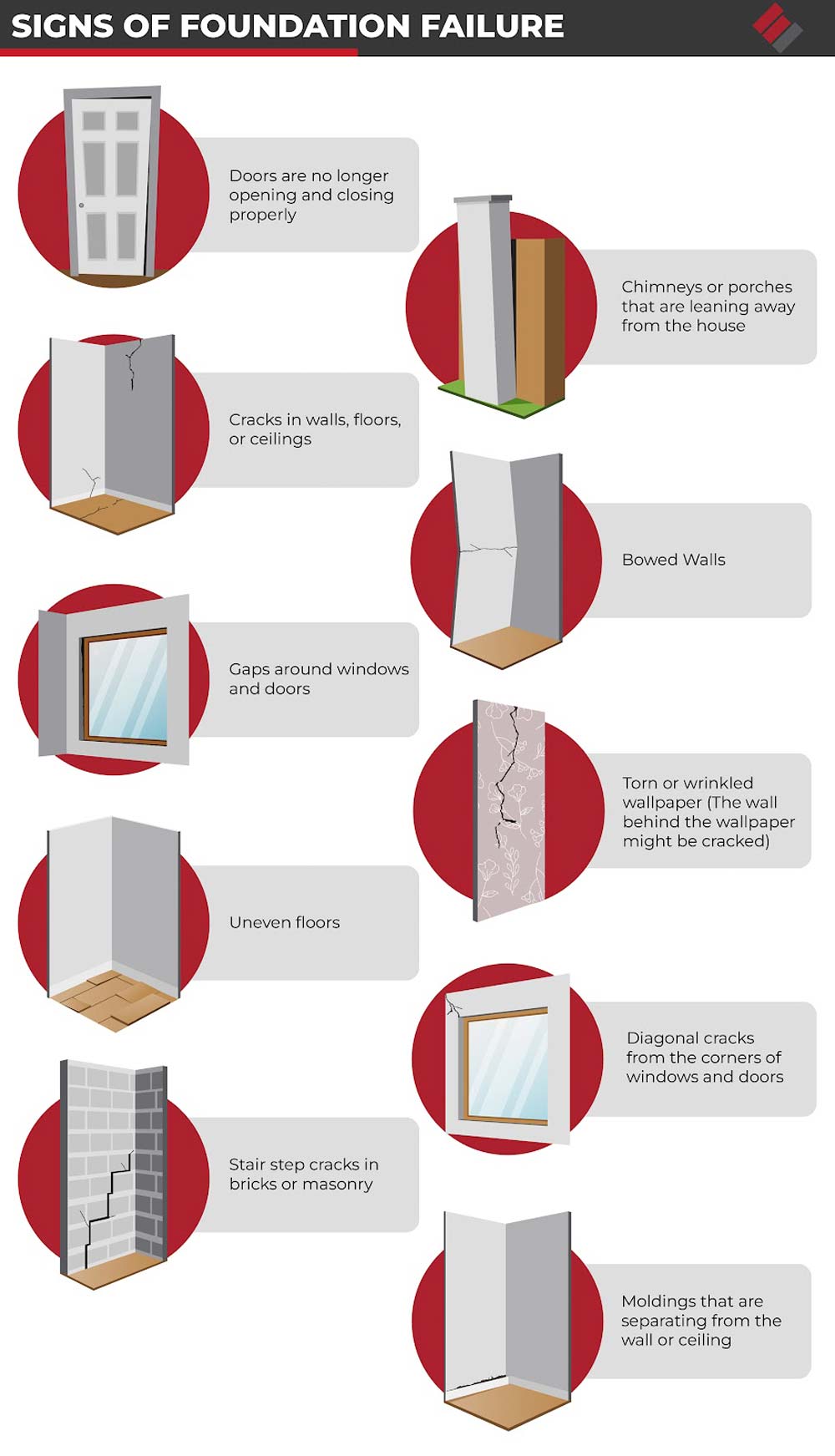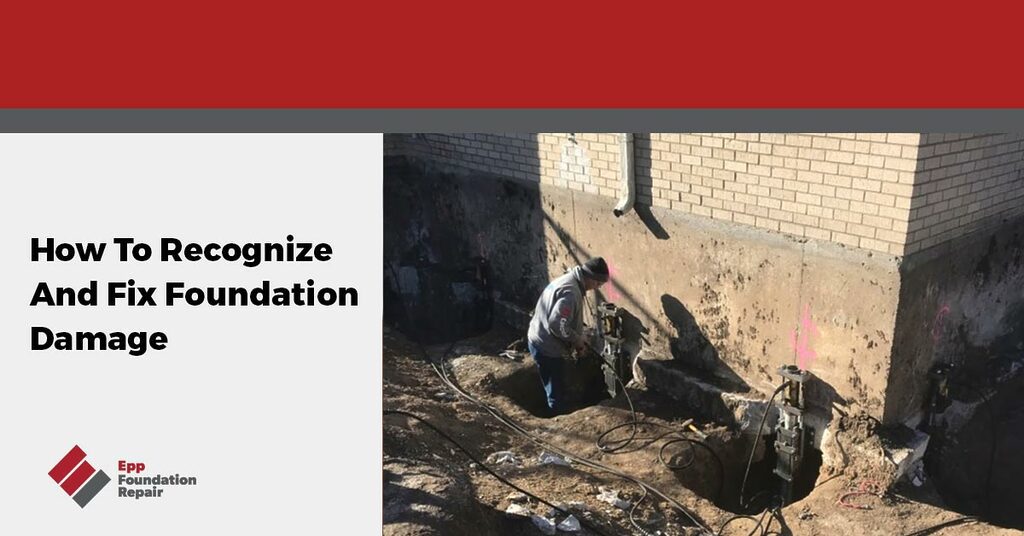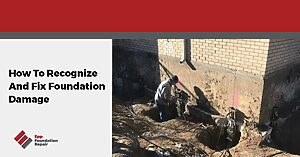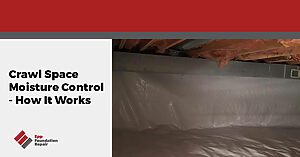Your home’s foundation is more than just the area underneath the structure. It is the backbone of the place where you live. It provides the stability and support necessary for the home to remain for a long time, but it is not without problems.
How To Recognize And Fix Foundation Damage
One of the issues that can occur and is often overlooked is damage to the foundation. In many cases, this damage continues to be a problem and can be advanced before it is recognized.
Noticing any signs associated with foundation damage is imperative for fixing the problem as soon as possible. After all, foundation issues are a one-way street. They will not get better on their own. They will get progressively worse.

If you want a stable home that will be there for the long term, ensure the foundation is always considered. You can do this by recognizing the signs of foundation damage, having inspections done, and getting repairs, when needed.
How Do You Know If Your Foundation Is Damaged?
When foundations begin to experience problems, they often give visible signs. Some signs may be associated with the foundation, and others could be seen elsewhere in the home.
This section will list some of the most commonly seen signs of foundation damage. Remember that a single problem is not always clear evidence of foundation problems, but if it is progressive or you see multiple issues, it should be addressed quickly.
Wall Cracks: It is not uncommon to have hairline cracks in the exterior or interior walls. Hairline cracks may be due to regular settling of the home or problems with the construction techniques.
On the other hand, if you notice exterior wall cracks in a horizontal or zigzag pattern, it may be an issue with foundation damage. Larger cracks on the interior walls, often originating at the doors or windows or continuing from the walls to the ceiling, are also a common symptom of foundation issues. If the crack looks bad, it’s probably foundation damage.
Sticking Windows and Doors: As the foundation experiences problems, it puts significant torque on the home’s frame. This includes the smaller window and door frames, which could get out of square and cause the doors and windows to stick when you open or close them.
Mildew Smell: If you smell mildew, then it is likely that you already have a problem with mold, as they are the same issue. You may also have what is sometimes called an old house smell, which occurs when mold breaks down. What you are smelling are the volatile organic compounds (VOCs) left behind.
Uneven or Sloping Floors: This may not be an easy issue to detect, but your mind may be able to sense the problem. Many people who have this issue report having vertigo or feeling as if they are stumbling as they walk across the room.
Water: One of the biggest issues leading to foundation problems is water. You may also notice that water is a common sign of foundation issues in your basement or crawlspace.
These are just some of the different possible signs of foundation damage. Monitor any issues that you see carefully and then take the next step.

Why You Need a Foundation Inspection
Homeowners can continuously inspect the foundation and look for possible signs of foundation problems. It is also a good idea to have a foundation inspection done by a professional regularly.
Foundation inspections differ from the typical home or pest control inspection you may be familiar with. When you contact Epp Foundation Repair, one of our foundation professionals will inspect the home thoroughly and look for any signs of problems.
It is sometimes recommended that you have a foundation inspection done by a professional annually. Conditions can change quickly, whether it is differences in the weather pattern or the moisture content in the soil. Still, foundation problems can begin and progress quickly when those issues occur.
Can You Repair a Foundation Yourself?

You may have a strong desire to do work on your own home. You may even consider yourself a weekend warrior and often work on projects that need doing on your property.
Having a DIY outlook on home repair leads many people to ask if they can repair a foundation problem. Is this something you should tackle as a DIY project?
Foundation repair is not something that most homeowners can do unless they have the specific knowledge and equipment necessary to get the job done. It is possible that you could cause more damage when you try to fix it as a DIY project.
Most homeowners will be able to patch cracks or fix other minor issues that may be occurring. However, this is only touching the surface because it won’t address the significant problems that may be happening to the foundation itself.
Most DIY foundation repair projects are temporary measures, and the underlying issue will eventually show again.
How Are Foundation Problems Fixed?
A professional can fix foundation problems, and Epp Foundation Repair is ready to handle any issues you may be experiencing.
There are specific methods that can be used to repair a foundation. These methods may differ in some ways from one project to another, but options are available for almost any type of foundation damage.
Underpinning is a cornerstone method for repairing uneven (differential) settlement. Underpinning utilizes push or helical piers driven into the earth until they reach stable strata. Once they can support the weight of the structure, they are attached to the foundation to provide the vertical support needed.

Another benefit of underpinning is the way that it can be used to raise the foundation hydraulically. Most foundations cannot be lifted to their original height, but they can often be lifted to an acceptable height to reduce or eliminate problems.
Other work may also be considered, depending upon the type of damage that has occurred.
For example, bowed basement walls can be stabilized and repaired using wall plate anchors, carbon fiber straps, or C-channel wall anchors. These anchors stabilize the wall and can pull it back into position again. Afterward, epoxy can be injected into the crack to seal it.
Many possible solutions depend upon the type and extent of damage to the foundation. The first step is to call Epp Foundation Repair and request a foundation inspection. We will let you know what is happening with your home and what can be done to fix it.







